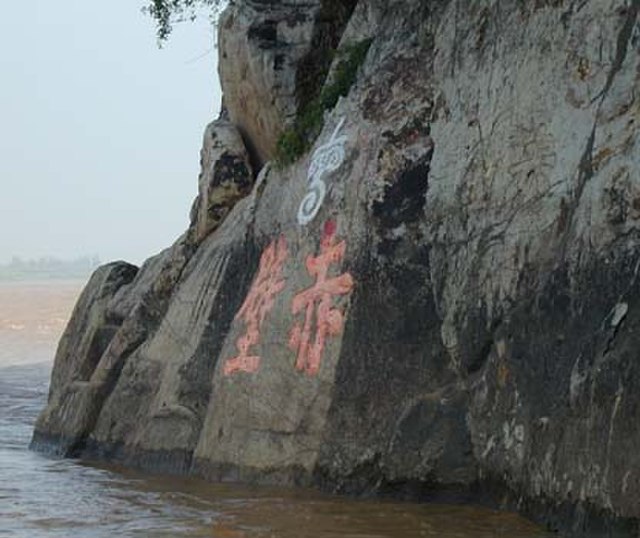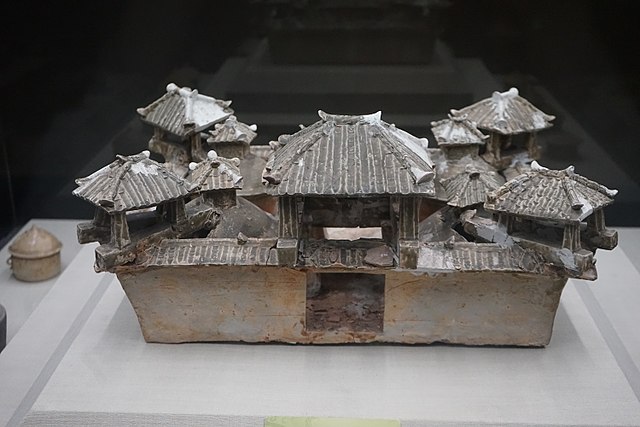Sun Quan, courtesy name Zhongmou (仲謀), posthumously known as Emperor Da of Wu, was the founder of the Eastern Wu dynasty, one of the Three Kingdoms of China. He inherited control of the warlord regime established by his elder brother, Sun Ce, in 200. He declared formal independence and ruled from November 222 to May 229 as the King of Wu and from May 229 to May 252 as the Emperor of Wu. Unlike his rivals Cao Cao and Liu Bei, Sun Quan was much younger than they were and governed his state mostly separate of politics and ideology. He is sometimes portrayed as neutral considering he adopted a flexible foreign policy between his two rivals with the goal of pursuing the greatest interests for the country.
Tang dynasty portrait of Sun Quan by Yan Liben
A mural showing chariots and cavalry, from Dahuting Tomb (打虎亭漢墓) of the late Eastern Han dynasty (25-220 AD), located in Zhengzhou, Henan
Statue of Sun Quan.
Portrait of Sun Quan from Sancai Tuhui
Wu, known in historiography as Eastern Wu or Sun Wu, was a dynastic state of China and one of the three major states that competed for supremacy over China in the Three Kingdoms period. It previously existed from 220 to 222 as a vassal kingdom nominally under Cao Wei, its rival state, but declared complete independence from Cao Wei in November 222. It was elevated to an empire in May 229 after its founding ruler, Sun Quan, declared himself emperor.
A jar made in Eastern Wu dating to the Three Kingdoms period
Before the dynasty of Eastern Wu was established, the territory was defended by the Sun clan in the Battle of Red Cliffs.
Shu Han exported cotton into Eastern Wu.
Celadon Storehouse and Courtyard. Wu Kingdom.








